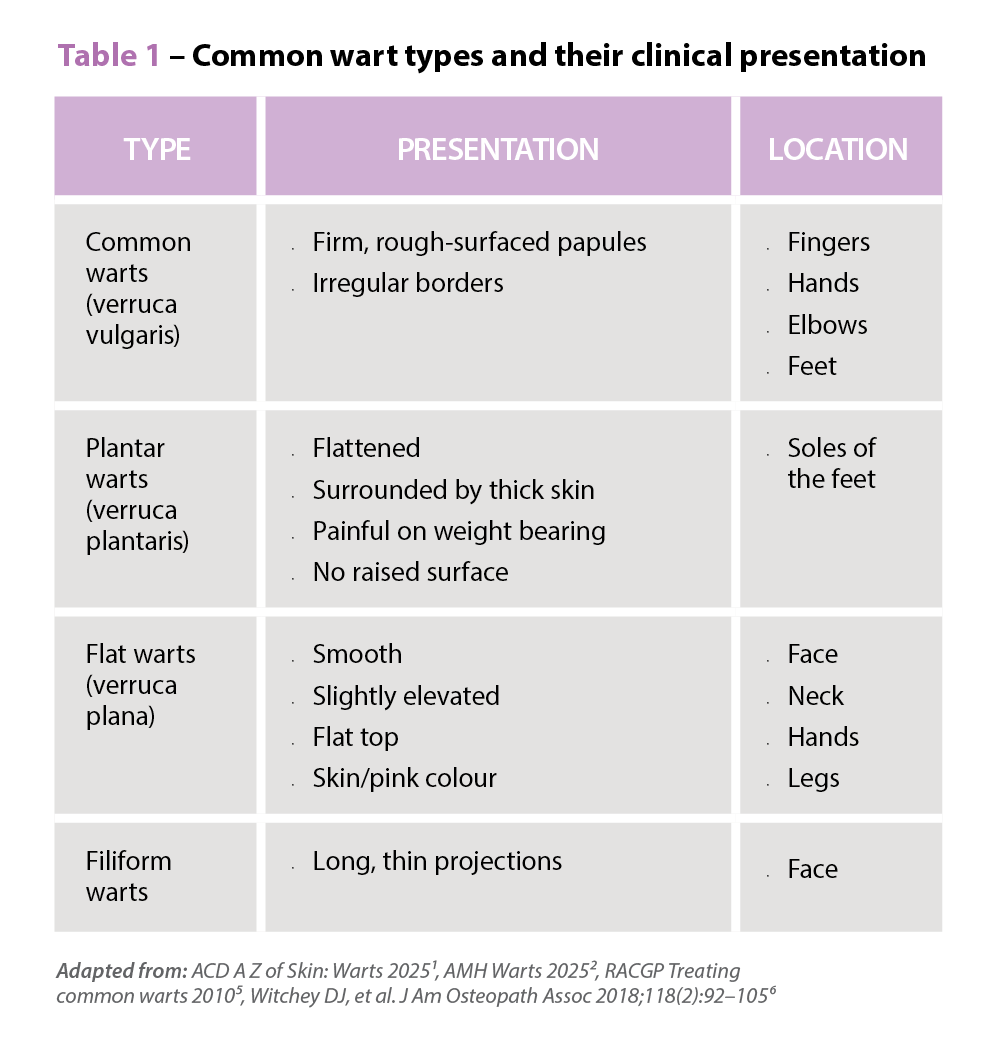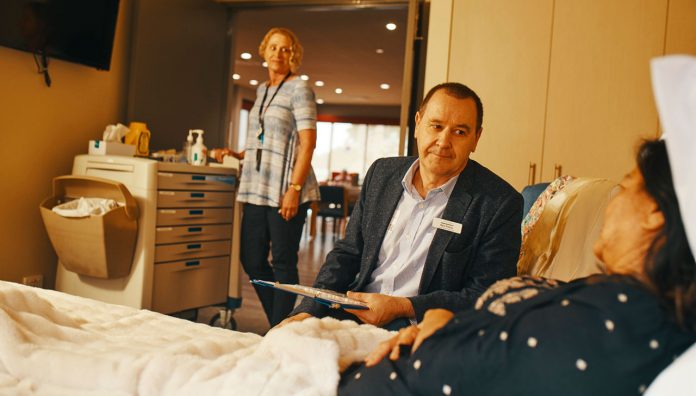More than 200,000 Australians currently live in aged care and the number grows each day. With high rates of medicine use, optimising medicine safety is a crucial concern.
At this very moment, Australia has an opportunity to lead the world in medicines safety in aged care. Late last year, medicine safety was officially declared a National Health Priority Area. Meanwhile, the ongoing Royal Commission into Aged Care Quality and Safety has already created strong popular support and political will for improving the provision of aged care in this country.
The Quality Use of Medicines and Pharmacy Research Centre at the University of South Australia, led by Professor Libby Roughead, has analysed the state of medicine safety in aged care. And the result, according to PSA National President Associate Professor Chris Freeman is sobering.
‘The data is clear,’ he says. ‘The current system is failing and new approaches are needed to improve medicines use in aged care.’ The findings are outlined in PSA’s Medicine safety: aged care report, providing an overview of medicine harms in aged care, as well as how pharmacists are essential to reducing them.
|
Simplifying medicine regimens
Complex medicine regimens lead to errors, particularly for people living in aged care. In many cases, this complexity is needless, with research suggesting the medicine regimens of people in aged care can be simplified in up to 60% of cases.1
As well as reducing the potential for errors, simplification would also reduce staff time spent on medicine administration and pharmacist time spent on medicine packing.
Tools such as the Medication Regimen Simplification Guide for Residential Aged CarE (MRS GRACE)2 are already being trialled and the results will guide work in this area.
Transitions as opportunities
Points of transition of care, such as from hospital to a residential aged care facility (RACF), are well established as times when people are particularly vulnerable to medicine problems. Previous Australian studies have shown that missed or delayed administration of doses of medicines were common when a person was discharged from hospital back to an RACF, though these studies were undertaken prior to the implementation of the national residential medication chart.3,4
Similarly, admission to aged care is another point at which the risk of medicine problems is heightened, as this is a time when many medicines, including antipsychotics, antidepressants and benzodiazepines, are started.5,6
Although these transitions are often seen as high-risk periods, with the right policy settings they could be an opportunity to optimise a person’s medicine use.
‘Mechanisms to optimise medicine use at the point of transition are required, such as medication action plans, which include the rationale for any new therapies started, the timeline for ceasing the medicine, and active methods for monitoring the potential harms from the medicine; most notably sedation and confusion,’ the report states.
Tackling medicine alterations
Alteration of medicines – such as by crushing – to support their administration is frequent in Australian aged care. In up to one-third of cases, this alteration of the medicine has the potential to cause problems.7
The PSA recommends approaching this by facilitating regular consultation between aged care staff and pharmacists so the latter are aware of people with specific requirements for medicine administration (e.g. difficulty swallowing, poor dexterity) and where alternative formulations may be required.7
‘Protocols are necessary to ensure staff in the aged care facility are aware of the need to consult pharmacists prior to establishing processes to alter medicines,’ PSA suggests.
‘Facilities could consider pharmacist review of administration practices to support quality improvement activities.’
Reducing renal risks
Up to half of all people living in RACFs have reduced renal function8–10 and pharmacists can take a more active role in preventing inappropriate medicines or doses for people with renal impairment.
‘Mechanisms to provide pharmacists with information on an individual’s renal function are necessary to ensure dosing errors and medicine selection errors are detected at the time a medicine is first prescribed or dispensed,’ PSA says.7
‘My Health Record provides one option for this if relevant pathology records have been uploaded in the record; however, mechanisms for direct reporting of renal function to pharmacists are also required.’7
Addressing systemic problems
Evidence shows the causes of some medicine problems lie at an organisational level. Australian research has shown, for instance, that the key determinant of use of medicines prescribed as ‘when required’ was the RACF, with the individual person’s characteristics having less influence.11
There is also wide variation between different facilities in the use of sedative or anticholinergic medicines, suggesting facility factors may be contributing to use.
The PSA has suggested that facility-wide medicine-use evaluation could be a tool for increasing the safe and quality use of medicines.
‘Facility-wide audit and feedback with review by a Medication Advisory Committee is a potential mechanism to identify over-use of medicines at the facility level and potential systems contributors and solutions,’ its report states. ‘Audit and feedback examining the extent of administration of medicines prescribed for use ‘as required’ will also be necessary.
‘Regular multidisciplinary review of the facility wide extent of administration of medicines to be used “as required”, including reason for use and cumulative dose may identify systemic problems related to over-use and potential chemical restraint, as well as support quality improvement activities.’
According to PSA, such system-wide monitoring could bolster the focus given to individual medicine-related problems through the residential medication management review (RMMR) program.
‘Mechanisms for supporting ongoing medicine review and continual revision of medication action plans to optimise medicine use are likely to be beneficial,’ the Medicine safety: aged care report states. ‘These mechanisms need to include provision of information to the whole health care team, including pharmacists with responsibility for dispensing medicines to the facilities. In particular, knowledge of the adverse medicine events detected during medicine reviews need to be provided to the whole health care team to support ongoing adverse event prevention.’
Focus on monitoring
Both falls and delirium are common in aged care settings.
In fact, each year there is one hospital admission for a falls-related injury for every five people living in Australian aged care.12
Meanwhile, based on overseas research, it is estimated that at least one in 10 people living in aged care experiences delirium.13,14 Falls and delirium can result from failure to recognise adverse effects of sedation or confusion from medicine use. A review of 30 coronial investigations into medicine-related deaths at RACFs between 2000 and 2013 found that at least four resulted from failures to review for or to recognise signs of toxicity.15 The PSA contends that falls and delirium events should each be a trigger for a medicine review.
‘Consideration could be given to proactively monitoring changes in a person’s cognition and mobility, including gait and balance, using validated tools16 when medicines with sedative or anticholinergic properties are added to the medicine regimen,’ the report suggests.
‘Cessation of medicines may need to be considered when cognition or mobility is affected. In addition, facility-wide audit and feedback on rates of these events may support quality improvement opportunities, as variation in the rates of these events facility to facility have been reported.’17
NEXT STEPSThe PSA believes the following actions directed at reducing medicine harm, some of which were recommended in the Royal Commission into Aged Care Quality and Safety’s Interim report: neglect, should be implemented as a matter of priority: 1 Physically embed pharmacists within aged care facility teams by increasing funding allocations to Residential Medication Management Reviews (RMMR) and Quality Use of Medicine (QUM) Services, sufficient to provide at least 0.6FTE per 100 aged care residents. 2 Provide the opportunity for pharmacists to engage in a cycle of care through the delivery of follow-up medication reviews to patients at risk, and remove the caps on the number of medicines reviews that pharmacists can perform to ensure that those elderly patients at risk of medicine-harm receive appropriate care. 3 As a matter of priority, the Commonwealth Government should adopt the recommendations of the MBS review taskforce by ensuring that pharmacists are remunerated to participate in case-conferencing for residents within aged care facilities. 4 Provide targeted activities delivered by pharmacists, such as the RedUSe program, funded under the QUM program. This would allow pharmacists to undertake audits of prescribing and provide feedback, and enable education to aged care facility staff and GPs in core medicine areas such as psychotropic medication use, opioids, deprescribing and antimicrobials. 5 Provide funding to aged care facilities to implement contemporary electronic medication management solutions, including prescribing, dispensing and administration. 6 Establish a Medicine Safety in Aged Care Resource and Support Program by allocating $8.7M over four years to support clinical governance of medicines management within aged care. 7 Allocate $2M for the implementation of Clinical Governance Principles for Pharmacy Services within residential aged care facilities. This robust framework can be used by pharmacists to guide service delivery that is safe, of high quality and clinically appropriate. 8 Similar to patients in the community, residents of aged care facilities should have equitable access to subsidised DAA services where clinically warranted and where the use of a DAA is mandated by the facility. 9 Allocate $15M through a targeted call for proposals through the Medical Research Future Fund (MRFF) to develop and trial interventions designed to reduce harm associated from medicines for older Australians. 10 Develop a standard comprehensive set of safety and quality use of medicine indicators for aged care facilities, and require facilities to regularly report outcomes against these measures. |
Next steps
A/Prof Freeman says he doesn’t think there is any jurisdiction in the world that could be held up as a gold standard of how medicine safety in aged care could work.
‘While there’s been a lot of investment and energy dedicated to collaborative care in primary care and general practice, we haven’t seen the same level provided into the aged care sector,’ he says.
Not only the quantum of medicines used, but the harm to older people in both RACFs and in their homes, was much higher than in the general population.
‘So we have an opportunity here in Australia to be world leaders in showing how we can provide a high quality, high level of integrated care for people who are in aged care facilities.
References
- Chen EYH, Bell JS, Ilomaki J, et al. Medication regimen complexity in 8 Australian residential aged care facilities: impact of age, length of stay, comorbidity, frailty, and dependence in activities of daily living. Clin Interv Aging 2019;14:1783– At: www.ncbi.nlm.nih.gov/pubmed/31695348
- Chen EY, Sluggett JK, Ilomäki J, et al. Development and validation of the Medication Regimen Simplification Guide for Residential Aged CarE (MRS GRACE). Clin Interv Aging 2018;13:975– At: www.ncbi.nlm.nih.gov/pubmed/29844664
- Pierce D, Fraser G. An investigation of medication information transfer and application in aged care facilities in an Australian rural setting. Rural and Remote Health 2009;9(3):1090. At: www.ncbi.nlm.nih.gov/pubmed/19751094
- Elliott RA, Tran T, Taylor SE, et al. Gaps in continuity of medication management during the transition from hospital to residential care: an observational study (MedGap Study). Australas J Ageing. 2012;31(4):247– At: www.ncbi.nlm.nih.gov/pubmed/23252983
- Inacio MC, Harrison SL, Lang C, et al. Antipsychotic medicines dispensed before and after entering residential aged care: preliminary report and findings from the National Historical Cohort of the Registry of Older South Australians. 2019. At: agedcare.royalcommission.gov.au/hearings/Documents/exhibits-2019/8-july/exhibit-6-1-darwin-general-tender-bundle/RCD.9999.0103.0001.pdf
- Inacio MC, Harrison SL, Lang C, et al. Antidepressants and benzodiazepines medicines dispensed before and after entering residential aged care: preliminary report and findings from the National Historical Cohort of the Registry of Older South Australians. 2019. At: agedcare.royalcommission.gov.au/hearings/Documents/exhibits-2019/8-july/exhibit-6-1-darwin-general-tender-bundle/RCD.9999.0098.0001.pdf
- Pharmaceutical Society of Australia. Medicine safety: aged care. Canberra: PSA; 2020. At: www.psa.org.au/wp-content/uploads/2020/02/Medicine-Safety-Aged-Care-WEB-RES1.pdf
- Gheewala P, Peterson G, Curtain C, et al. Impact of the pharmacist medication review services on drug-related problems and potentially inappropriate prescribing of renally cleared medications in residents of aged care facilities. Drugs Aging 2014;31:825– At: www.ncbi.nlm.nih.gov/pubmed/25187228
- McClellan WM, Resnick B, Lei L, et al. Prevalence and severity of chronic kidney disease and anemia in the nursing home population. J Am Med Dir Assoc 2010;11(1):33– At: www.ncbi.nlm.nih.gov/pubmed/20129213
- Bolmsjo BB, Molstad S, Gallagher M, et al. Risk factors and consequences of decreased kidney function in nursing home residents: a longitudinal study. Geriatr Gerontol Int 2017;17(5):791– At: www.sciencedirect.com/science/article/pii/S1525861019305596
- Stokes JA, Purdie DM, Roberts MS. Factors influencing PRN medication use in nursing homes. Pharm World Sci 2004;26(3):148– At: www.ncbi.nlm.nih.gov/pubmed/15230362
- Australian Institute of Health and Welfare. Trends in hospitalised injury due to falls in older people 2007–08 to 2016– Injury research and statistics series no. 126. Canberra: AIHW; 2019. At: www.aihw.gov.au/getmedia/427d3a0d-88c2-45c5-bc23-5e3986375bba/aihw_injcat_206.pdf.aspx.
- Morichi V, Fedecostante M, Morandi A, et al. A point prevalence study of delirium in Italian nursing homes. Dement Geriatr Cogn Disord 2018;46(1–2):27– At: www.ncbi.nlm.nih.gov/pubmed/30092581
- McCusker J, Cole MG, Voyer P, et al. Prevalence and incidence of delirium in long-term care. Int J Geriatr Psych 2011;26(11):1152– At: www.ncbi.nlm.nih.gov/pubmed/21274904
- Jokanovic N, Ferrah N, Lovell JJ, et al. A review of coronial investigations into medication-related deaths in residential aged care. Res Soc Admin Pharm 2019;15(4):410– At: www.ncbi.nlm.nih.gov/pubmed/29934279
- Soubra R, Chkeir A, Novella J-L. A systematic review of thirty-one assessment tests to evaluate mobility in older adults. BioMed Res Int 2019;2019:1– At: www.hindawi.com/journals/bmri/2019/1354362/
- Jauny R, Parsons J. Delirium assessment and management: a qualitative study on aged-care nurses’ experiences. In: Unitec ePress Occasional and Discussion Paper Series; Vol 7: 2017: unitec.ac.nz/epress/wp-content/uploads/2017/11/Delirium-assessment.pdf
- Page AT, Falster MO, Litchfield M, et al. Polypharmacy among older Australians, 2006–2017: a population-based study. Medical J Aust. 2019;211(2):71–75. At: www.mja.com.au/journal/2019/211/2/polypharmacy-among-older-australians-2006-2017-population-based-study




 Symptoms
Symptoms










